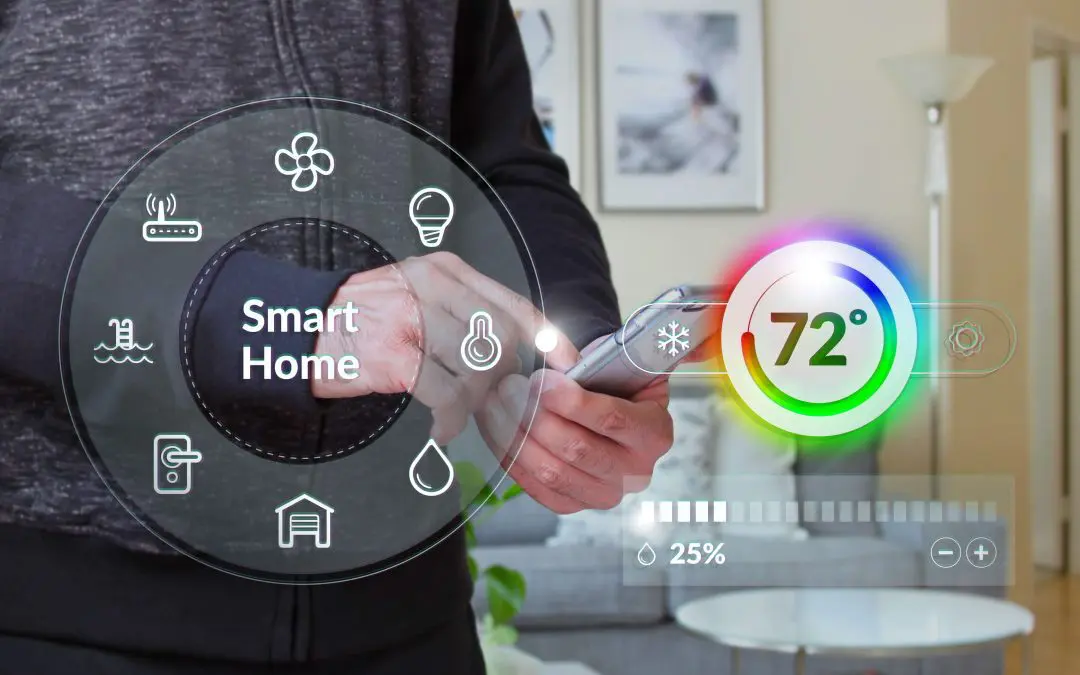As the 21st century progresses, our homes are not just becoming safer and more comfortable—they’re also getting smarter. Smart home technology has evolved from a niche luxury to a widespread convenience, revolutionizing how we interact with our living spaces. In this blog post, we’ll delve into some of the top smart home features that are changing the landscape of modern living, making homes more efficient, secure, and enjoyable.
1. Voice-Activated Assistants: The Center of Smart Home Features
Voice-activated assistants like Amazon Alexa, Google Assistant, and Apple Siri have become central to the smart home experience. These devices act as the hub of home automation, allowing users to control various smart devices, search the internet, play music, and manage daily tasks through simple voice commands. The convenience of controlling your environment through speech has proven to be more than just a novelty—it’s a significant step towards more accessible home environments.
2. Smart Lighting Systems
Smart lighting goes beyond merely turning lights on and off remotely. They offer features such as color temperature adjustment, integration with music and entertainment systems, and programmability for different times of the day. Smart lighting systems conserve energy and conveniently adjust your home’s ambiance.
3. Intelligent Thermostat Smart Home Features
Smart thermostats use sensors and algorithms to learn your habits and adjust the heating and cooling systems accordingly. This ensures optimal comfort and reduces energy consumption significantly, which can lead to substantial savings on utility bills.
4. Advanced Security Systems
Smart security systems and cameras provide homeowners with peace of mind through high-definition video surveillance, motion detection, and real-time alerts to smartphones. These systems can be integrated with other smart home features for enhanced security measures, such as turning on lights when motion is detected or sending live video feeds directly to a mobile device.
5. Smart Locks and Doorbells
Smart locks and video doorbells enhance security and convenience. They allow homeowners to remotely control access to their homes, view visitors through video doorbells, and even grant temporary access to guests without needing physical keys. This feature is particularly useful for managing deliveries and ensuring your home remains secure even when you’re away.
6. Home Automation Scenes
One of the most valuable aspects of smart homes is the ability to create “scenes” or scenarios that automate multiple functions simultaneously. For instance, a “good night” scene could turn off all lights, lock the doors, and lower the thermostat—all with a single voice command or press of a button.
7. Health Monitoring Smart Home Features
Increasingly, smart homes are incorporating health and wellness monitoring. Devices like smart scales, fitness trackers, and even air quality monitors can be connected to provide real-time health and environmental data. This information can help residents maintain a healthy lifestyle and make informed decisions about their environment and habits.
Smart home technology is continuously evolving, driven by advancements in AI and IoT. As more devices become connected, the possibilities for automating and enhancing our home environments become virtually limitless. Whether improving energy efficiency, enhancing security, or simply adding a touch of convenience, smart home features are reshaping how we live, one connected device at a time.
FAQs About Smart Home Technology
Can smart home devices save money?
Yes, devices like smart thermostats and smart lights can help reduce energy usage, saving money on your energy bills. Smart appliances can also provide diagnostics to help maintain their efficiency and longevity.
Are smart homes secure?
Smart homes can be secure, but it depends on the security of the devices and network used. It’s essential to use strong, unique passwords, enable two-factor authentication, and keep software up to date to protect against unauthorized access.
What is the environmental impact of smart homes?
Smart homes can have a positive environmental impact by reducing energy consumption and carbon footprint by efficiently managing home heating, cooling, and electricity usage. However, producing and disposing of smart devices also contribute to environmental concerns.
How can smart homes assist elderly or disabled individuals?
Smart home technology can enhance the quality of life for elderly or disabled individuals by enabling voice-activated control of home functions, automatic adjustments for comfort, and remote monitoring by caregivers, increasing independence and safety.
Border Home and Property Inspections offers home inspections to customers in the Midwest region of Alberta and Saskatchewan. Contact us to schedule our services. For more home improvement and maintenance insights, explore our blog for tips and practical advice for homeowners like you.

